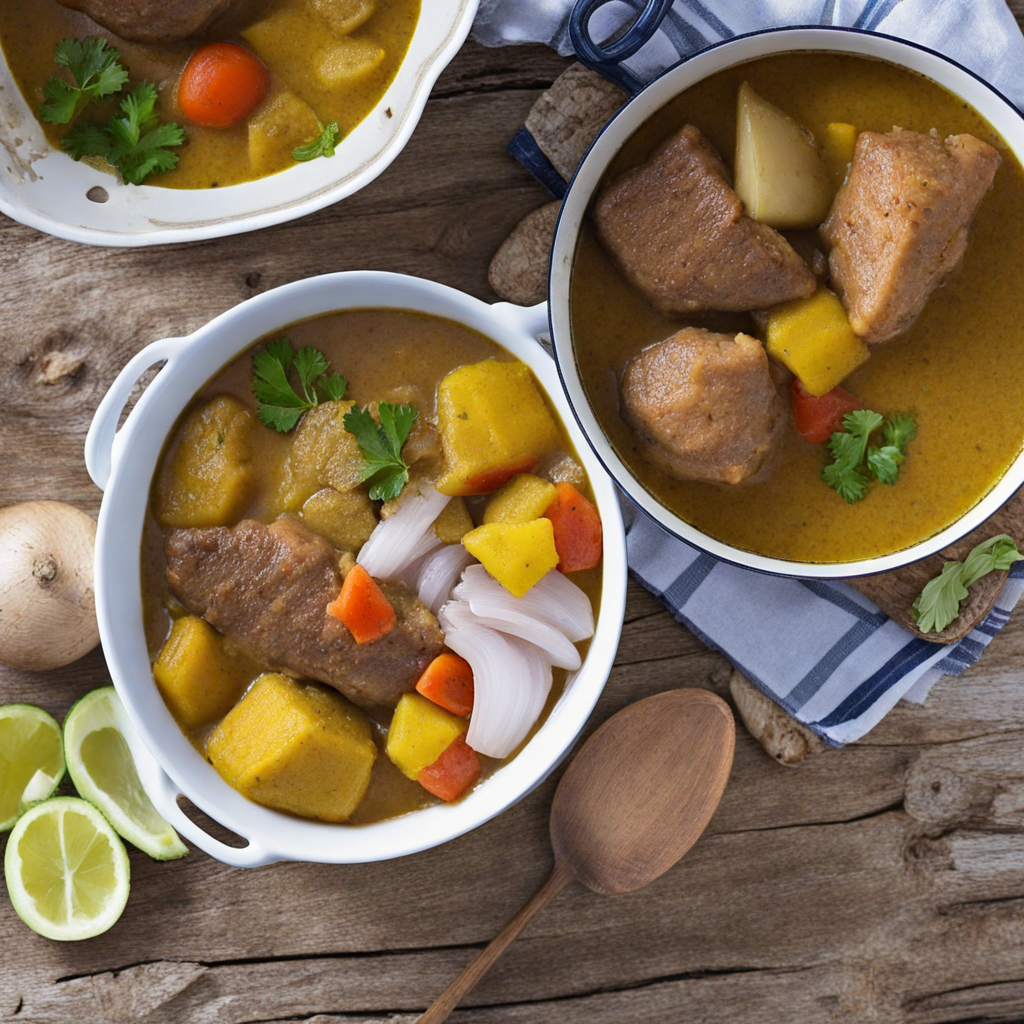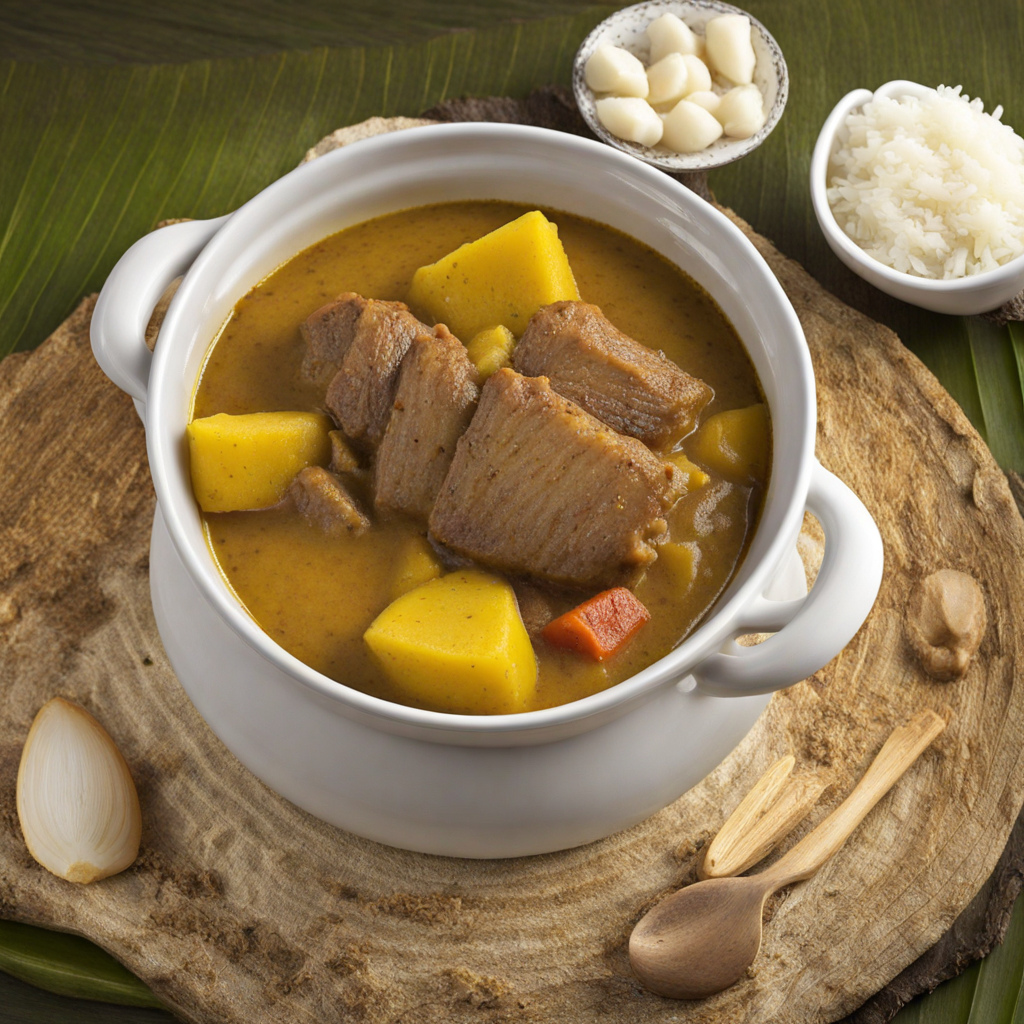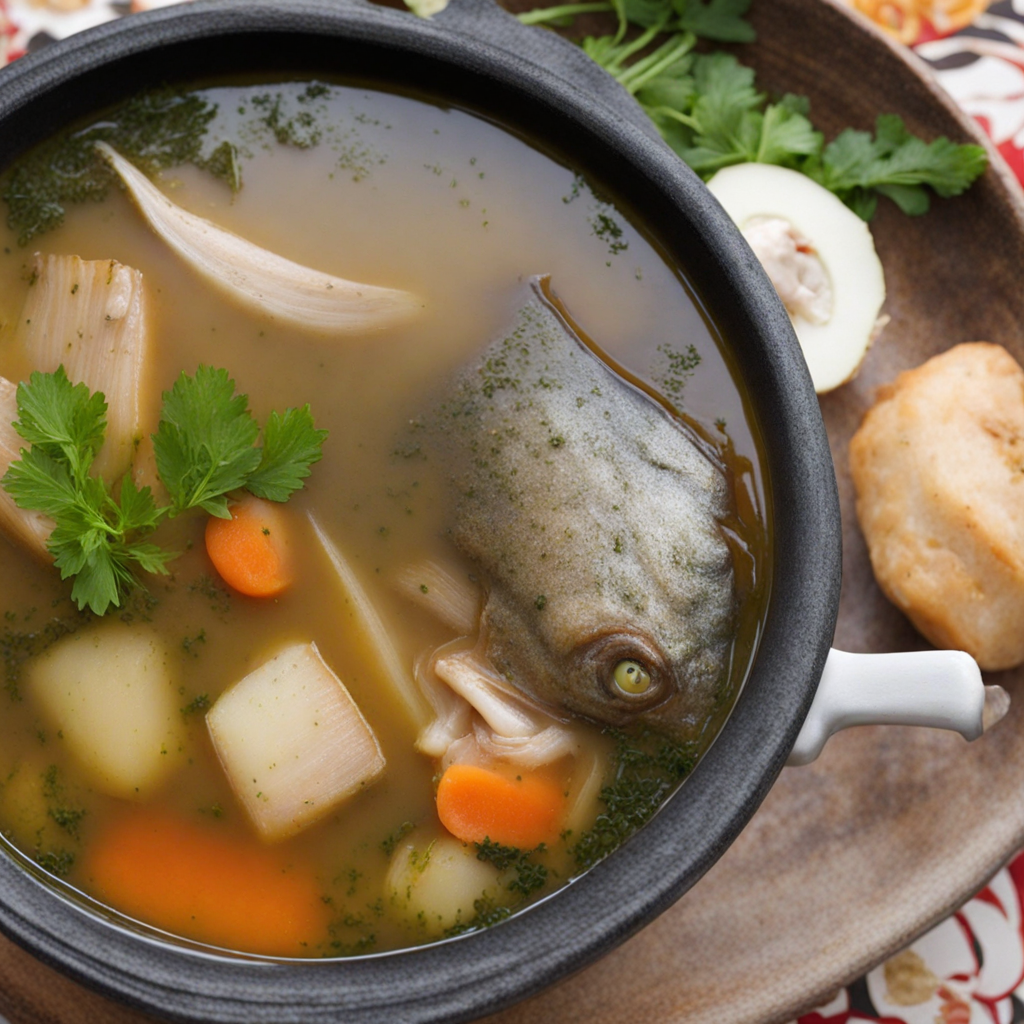Sancocho
Sancocho is a hearty and flavorful stew that embodies the essence of Dominican cuisine. This beloved dish typically features a mix of meats, such as chicken, pork, or beef, simmered to perfection with an array of vibrant vegetables. The base of the stew is enriched with a medley of root vegetables like yucca, plantains, and potatoes, which not only add depth to the flavor but also contribute a satisfying texture. The combination of meats and vegetables creates a harmonious balance that is both comforting and filling, making it a popular choice for family gatherings and festive occasions. One of the key elements that sets Sancocho apart is the use of aromatic herbs and spices, which infuse the dish with a unique and robust flavor profile. Ingredients like cilantro, garlic, and onions play a crucial role in enhancing the overall taste, while the addition of local spices brings an authentic Dominican twist. The stew is often served with a side of rice or avocado, creating a well-rounded meal that is enjoyed by many. Each spoonful offers a delightful explosion of flavors that transports you straight to the heart of the Caribbean. Sancocho is more than just a dish; it is a cultural experience that reflects the rich culinary heritage of Dominica. Often prepared for special occasions and communal feasts, it brings people together, fostering a sense of community and shared enjoyment. As you savor this dish, you'll discover the warmth and hospitality of Dominican culture, making it a must-try for anyone looking to explore new and exciting flavors. Whether enjoyed on a rainy day or during a festive celebration, Sancocho promises to tantalize your taste buds and leave a lasting impression.
How It Became This Dish
Sancocho is a hearty stew that has become a culinary emblem of the Caribbean, particularly in Dominica. The dish’s origin is as rich and varied as the ingredients it encompasses, reflecting the complex tapestry of cultural influences that have shaped the island's history. This staple not only nourishes the body but also serves as a cultural touchstone, symbolizing family, community, and the blending of traditions that define Dominican identity. Origins of Sancocho The roots of sancocho can be traced back to the indigenous peoples of the Caribbean, who utilized locally available ingredients to create nourishing stews. The word "sancocho" itself is believed to derive from the Spanish term "sancochar," which means to parboil. This culinary term highlights the method of cooking that involves boiling ingredients together to meld their flavors. The Spanish colonization of the Caribbean introduced new ingredients and cooking techniques, which would later be integrated into the indigenous practices. As the colonial era progressed, African slaves brought to the Caribbean added their own culinary traditions to the mix. The African influence is particularly significant in the use of okra, yams, and spices, which enriched the stew and provided a unique flavor profile. The blending of these various elements laid the foundation for what would evolve into the sancocho we know today. In Dominica, the dish has taken on a distinctive character, influenced by the island's natural bounty. The lush terrain is home to a variety of root vegetables, herbs, and spices. Traditional sancocho in Dominica often incorporates ingredients such as green plantains, yams, sweet potatoes, and a medley of meats, including chicken, pork, and fish. The use of fresh herbs like thyme and the addition of local hot peppers give the dish its signature zest. Cultural Significance Sancocho is more than just a meal; it is a symbol of Dominican culture and community. The dish is often prepared for gatherings and celebrations, serving as a centerpiece that brings people together. It is common to find sancocho at family reunions, weddings, and public festivals, where the act of sharing the dish fosters a sense of unity and belonging. In Dominican society, food has always played a crucial role in social interactions. Sancocho embodies the spirit of hospitality and warmth, reflecting the islanders' ethos of sharing what they have with others. The preparation of sancocho is frequently a communal effort, with families coming together to chop vegetables, season meats, and stir the pot. This collaborative cooking process reinforces family bonds and strengthens community ties. Development Over Time As Dominica has evolved, so too has its sancocho. The dish has adapted to changing tastes, availability of ingredients, and cultural influences. Over the years, sancocho has transcended its humble origins to become a celebrated dish not only in homes but also in restaurants across the island. While traditional recipes remain popular, contemporary interpretations have emerged, showcasing the creativity of local chefs who experiment with flavors and presentation. One notable aspect of sancocho's evolution is the incorporation of international influences. As tourism has grown in Dominica, chefs have begun to blend traditional sancocho with global culinary trends. This has resulted in variations that may include fusion ingredients, such as quinoa or exotic spices, while still respecting the core essence of the dish. These modern adaptations cater to diverse palates and reflect the dynamic nature of Caribbean cuisine. Moreover, the rise of the farm-to-table movement has brought renewed attention to the sourcing of ingredients. Many chefs and home cooks emphasize the use of locally grown produce and sustainably sourced meats, which contributes to the freshness and authenticity of the dish. This focus on local agriculture not only enhances the flavor of sancocho but also supports the island’s economy and environmental sustainability. Sancocho in Today’s Context In today’s world, sancocho continues to serve as a symbol of resilience and cultural identity for Dominicans. As the island navigates the challenges of globalization and environmental changes, the dish remains a steadfast reminder of the importance of tradition and community. The act of preparing and sharing sancocho is a way for Dominicans to connect with their heritage and each other, reinforcing a sense of pride in their cultural roots. The culinary landscape of Dominica is increasingly recognized on the global stage, with sancocho often featured as a highlight in food festivals and culinary events. This growing appreciation for Dominican cuisine has sparked interest in traditional cooking techniques and ingredients, encouraging a new generation to explore their culinary heritage. Cooking classes and workshops centered around sancocho have emerged, allowing locals and visitors alike to learn about the dish's history and preparation methods. Furthermore, the rise of social media has provided a platform for sharing Dominican culinary culture. Food enthusiasts and chefs showcase their sancocho creations online, celebrating the diversity of ingredients and variations that exist within the dish. This digital sharing helps to preserve the stories and traditions associated with sancocho, ensuring that its legacy endures for future generations. Conclusion Sancocho is much more than a delicious stew; it is a vibrant embodiment of Dominica’s history, culture, and community spirit. From its indigenous roots to its evolution through colonization and globalization, the dish has adapted while retaining its essence as a symbol of togetherness and cultural pride. Whether enjoyed at a family gathering, a community celebration, or a restaurant, sancocho remains a cherished culinary tradition that nourishes both the body and the soul, reflecting the rich heritage of Dominica and its people. As Dominica continues to navigate the complexities of the modern world, sancocho stands as a testament to the enduring power of food to connect, celebrate, and unite.
You may like
Discover local flavors from Dominica







